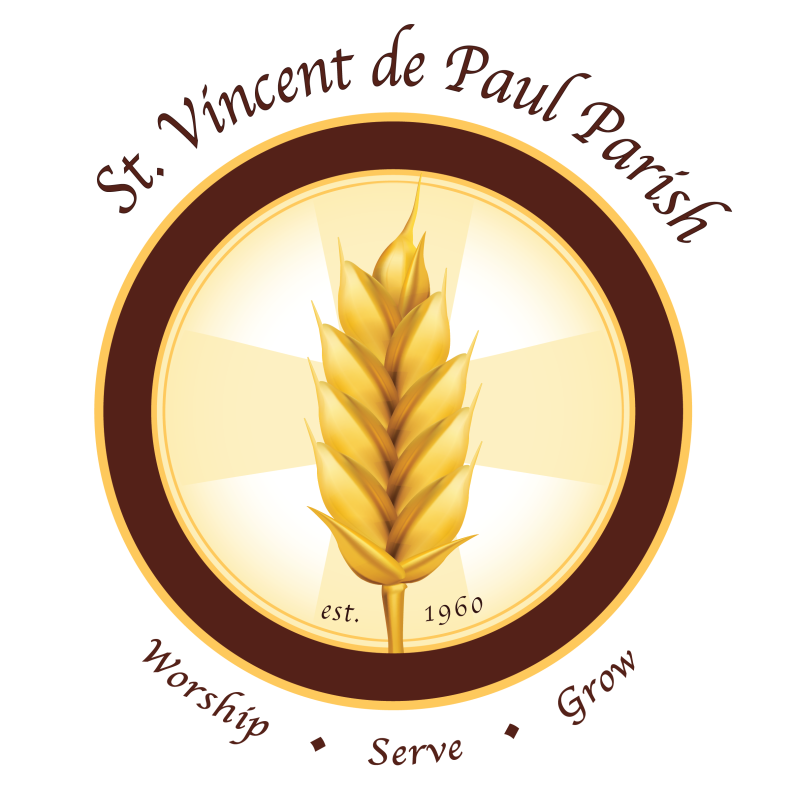Eucharist
The other sacraments, and indeed all ecclesiastical ministries and works of the apostolate, are bound up with the Eucharist and are oriented toward it. (CCC 1324)
Đời sống phụng vụ của Giáo hội xoay quanh các bí tích, lấy Bí tích Thánh Thể làm trung tâm (Danh mục Giáo lý Quốc gia, số 35). Trong Thánh Lễ, chúng ta được nuôi dưỡng bằng Lời Chúa và được nuôi dưỡng bằng Mình và Máu Chúa Kitô. Chúng tôi tin rằng Chúa Giêsu Phục Sinh hiện diện thực sự và bản chất trong Bí tích Thánh Thể. Bí tích Thánh Thể không phải là dấu hiệu hay biểu tượng của Chúa Giêsu; đúng hơn, chúng ta đón nhận chính Chúa Giêsu trong và qua các hình Thánh Thể. Vị linh mục, nhờ quyền truyền chức và tác động của Chúa Thánh Thần, biến bánh và rượu thành Mình và Máu Chúa Giêsu. Đây được gọi là sự biến đổi bản chất.
Nhờ việc truyền phép, việc biến đổi bánh và rượu thành Mình và Máu Chúa Kitô được thực hiện. Dưới hình bánh và rượu thánh hiến, chính Chúa Kitô sống động và vinh quang hiện diện một cách đích thực, thực sự và bản thể: Mình và Máu, linh hồn và thần tính của Người. (CCC 1413)
The New Covenant
Tôi là bánh hằng sống từ trời xuống; ai ăn bánh này sẽ sống đời đời;…Ai ăn thịt và uống máu tôi thì có sự sống đời đời và…ở trong tôi và tôi ở trong người ấy. (Giăng 6:51, 54, 56)
Trong các Tin Mừng chúng ta đọc thấy Bí tích Thánh Thể được thiết lập trong Bữa Tiệc Ly. Đây là sự ứng nghiệm các giao ước trong Kinh thánh tiếng Do Thái. Trong trình thuật Bữa Tiệc Ly, Chúa Giêsu cầm lấy, bẻ ra và trao bánh và rượu cho các môn đệ. Khi chúc rượu, Chúa Giêsu gọi đó là “máu giao ước” (Ma-thi-ơ và Mác) và “giao ước mới trong máu ta” (Lu-ca).
This reminds us of the blood ritual with which the covenant was ratified at Sinai (Ex 24) -- the sprinkled the blood of sacrificed animals united God and Israel in one relationship, so now the shed blood of Jesus on the cross is the bond of union between new covenant partners -- God the Father, Jesus and the Christian Church. Through Jesus’ sacrifice, all the baptized are in relationship with God.
Sách Giáo lý dạy rằng tất cả những người Công giáo đã rước lễ lần đầu đều được chào đón rước lễ trong Thánh lễ, trừ khi phạm tội trọng.
Anyone who desires to receive Christ in Eucharistic communion must be in the state of grace. Anyone aware of having sinned mortally must not receive communion without having received absolution in the sacrament of penance. (CCC 1415)
The Church warmly recommends that the faithful receive Holy Communion when they participate in the celebration of the Eucharist; she obliges them to do so at least once a year. (CCC 1417)
Việc lãnh nhận Bí tích Thánh Thể thay đổi chúng ta. Nó biểu thị và thực hiện sự hiệp nhất của cộng đồng và giúp củng cố Thân Thể Chúa Kitô.
Hiểu biết về Thánh Lễ
The central act of worship in the Catholic Church is the Mass. It is in the liturgy that the saving death and resurrection of Jesus once for all is made present again in all its fullness and promise – and we are privileged to share in His Body and Blood, fulfilling his command as we proclaim his death and resurrection until He comes again. It is in the liturgy that our communal prayers unite us into the Body of Christ. It is in the liturgy that we most fully live out our Christian faith.
The liturgical celebration is divided into two parts: the Liturgy of the Word and the Liturgy of the Eucharist. First we hear the Word of God proclaimed in the scriptures and respond by singing God’s own Word in the Psalm. Next that Word is broken open in the homily. We respond by professing our faith publicly. Our communal prayers are offered for all the living and the dead in the Creed. Along with the Presider, we offer in our own way, the gifts of bread and wine and are given a share in the Body and Blood of the Lord, broken and poured out for us. We receive the Eucharist, Christ’s real and true presence, and we renew our commitment to Jesus. Finally, we are sent forth to proclaim the Good News!











